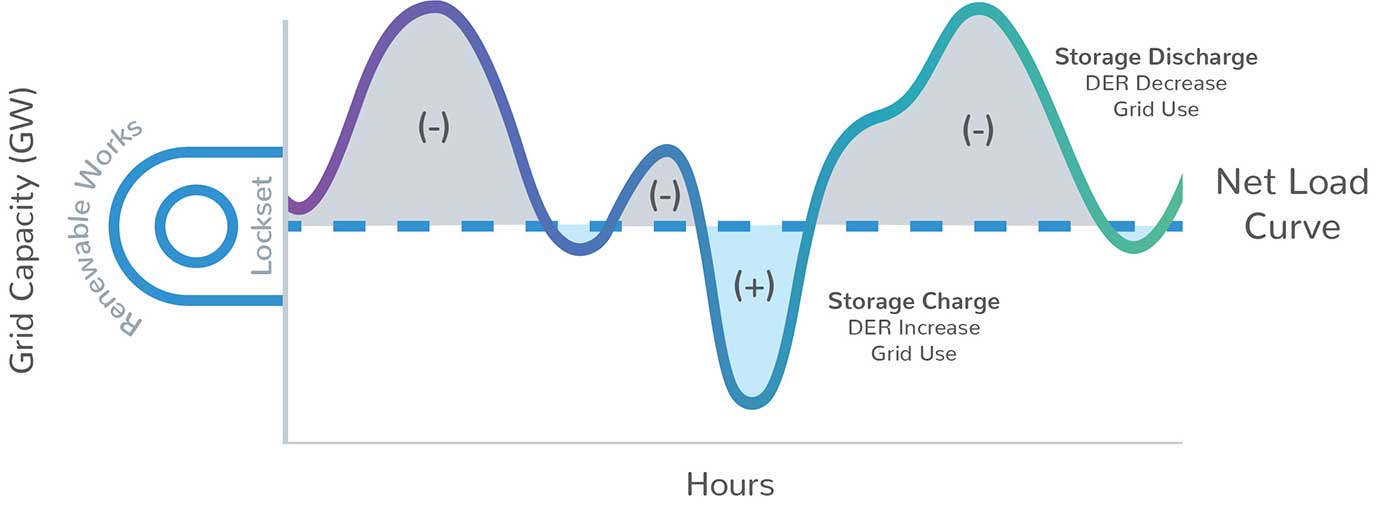Bidding behind-the-meter resources into the wholesale electricity market
From 2018 to 2020, Center for Sustainable Energy led the effort to pilot two distributed energy resources (DER) portfolios of select schools and hotels to better understand the barriers and outcomes these entities experience when they attempt to bid their behind-the-meter (BTM) resources into the wholesale electricity market. While these pilot projects focus on host sites in California, they are generally applicable nationwide as utility customers increasingly look to DERs to reduce energy costs and electricity markets are faced with greater integration of solar and wind and more dynamic customer loads. To date, only a handful of customer-sited DER technologies throughout California have successfully integrated as direct-to-wholesale market participants due to technical, institutional and regulatory barriers. Expanding participation of DERs into wholesale electricity markets leads to more effective use of DER assets by generating value-add savings and benefits for the electric utility grid while lowering utility costs for customers.
THE CHALLENGE FOR DER INTEGRATION
As a global climate solutions leader, California is committed to decarbonizing its electricity supply by requiring generation to be at least 60% qualifying renewable energy by 2030 and 100% noncarbon resources by 2045 (CA Senate Bill 100). Further, many cities, counties, community choice aggregation (CCA) suppliers and businesses throughout the state are committed to even more aggressive goals to achieve significant decarbonization targets in the future.
Most of California’s renewable energy comes from wind and solar photovoltaic energy resources that generate electricity in response to weather and diurnal cycles (i.e., sunrise and sunset), which creates new forms of short-term variability for the grid. This variability is currently balanced by flexible natural gas generation.
The key to unlock the next level of grid decarbonization is being able to match high penetrations of wind and solar generation with low cost and highly scalable flexible DER and storage.

Cost Reductions
DER systems have the potential to significantly lower on-site energy costs for individual host customers and electric utility system costs for all grid users and CAISO market participants. For example, on the distribution circuit energy storage devices may defer the cost of expensive capital projects such as additional transformers or line upgrades.
Grid Reliability
As solar and wind generation expands in California, it will increase grid balancing needs and services. Behind-the-meter energy storage and flexible grid-responsive resources represent two important resources capable of delivering local overload relief, power quality and ramp-rate mitigation, as well as customer backup power.
Environmental Impacts
Increased access to wholesale markets could allow DER systems to better accomplish California’s ambitious clean energy goals by reducing greenhouse gas emissions, deferring or substituting grid investments and improving grid reliability.
KEY STRATEGIES FOR SUCCESSFUL MARKET INTEGRATION
Conduct regular monthly analysis of DER capabilities and revenue potential
Successful DER market integration requires understanding the capabilities and revenue potential of the DER technologies. Technologies must meet certain technical requirements to participate in wholesale markets.
Detailed understanding of utility tariff charges
Value stacking operational strategies must consider the cost and benefit of providing each service and value. As DERs primary value is typically retail bill management, successful operational strategies will be built around the need to provide utility bill savings.
Detailed understanding of wholesale market participation rules and regulatory framework
DERs must follow both retail and wholesale rules when participating in wholesale markets. DER operators must understand and have a plan to follow these rules before integrating DERs into wholesale markets.
KEY PROJECT FINDINGS
The project team identified several existing market and policy barriers that currently stand in the way of expanding behind the meter DER and storage wholesale market participation:
- Lack of compensation for grid exports from PDR
- No pathway for providing frequency regulation from PDR
- Wholesale market participation barriers to entry
- Baselines and Direct Metering
The implementation of this project allowed the team to identify and research these existing barriers to behind the meter DER. Despite the obstacles, wholesale market participation remains a viable pathway in helping California reduce its energy use and reducing costs for utility customers. To learn more about the project, download the market blueprint report.
